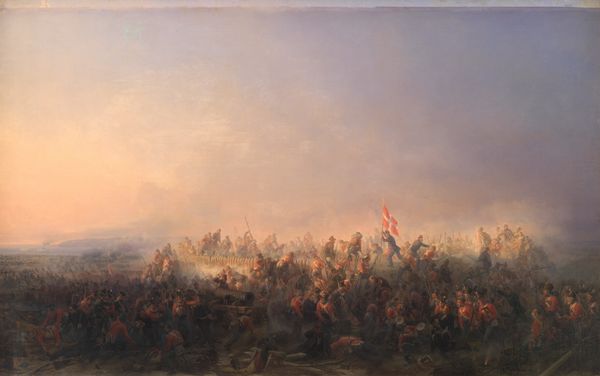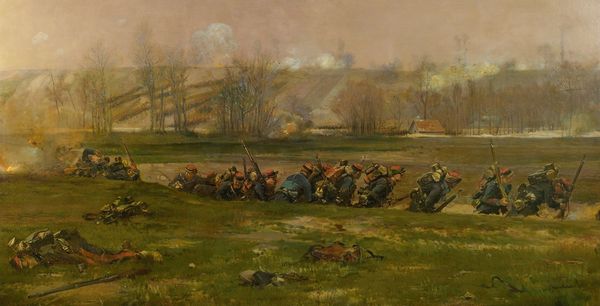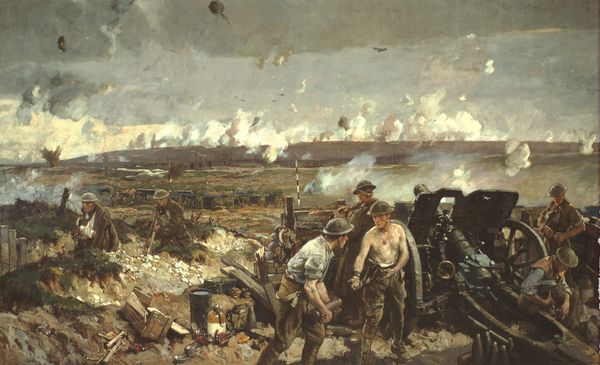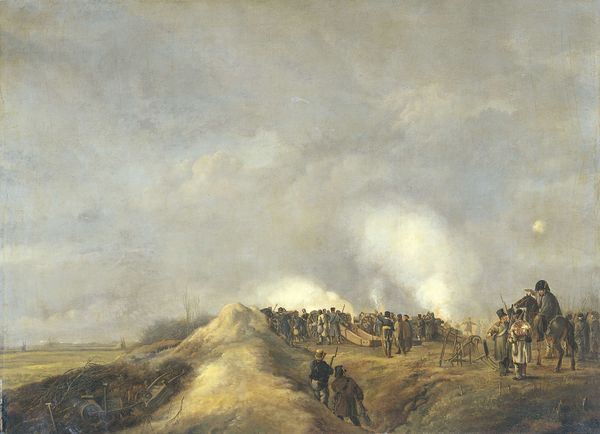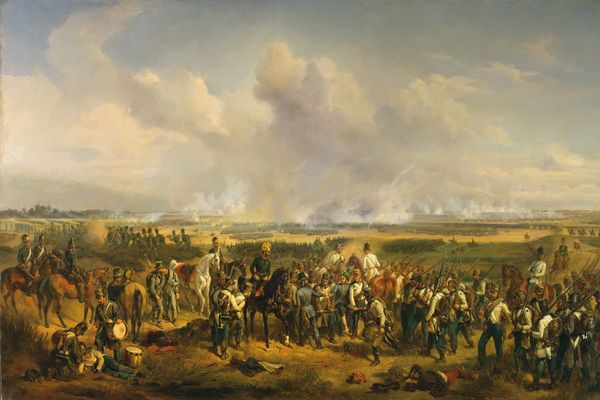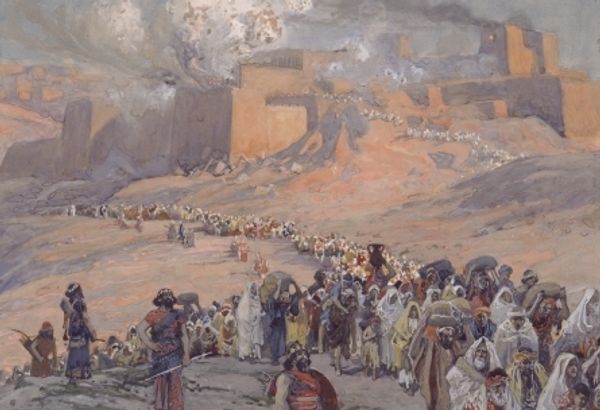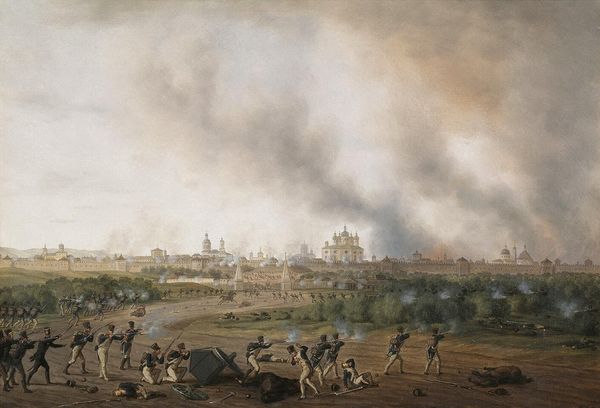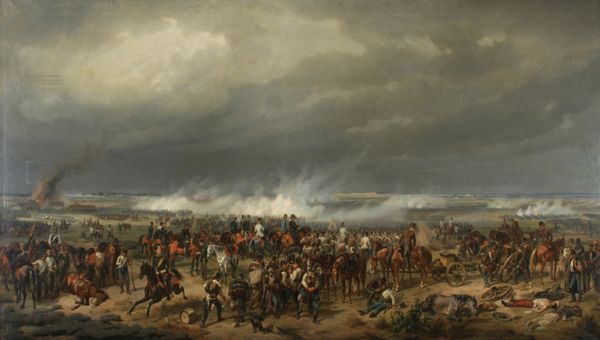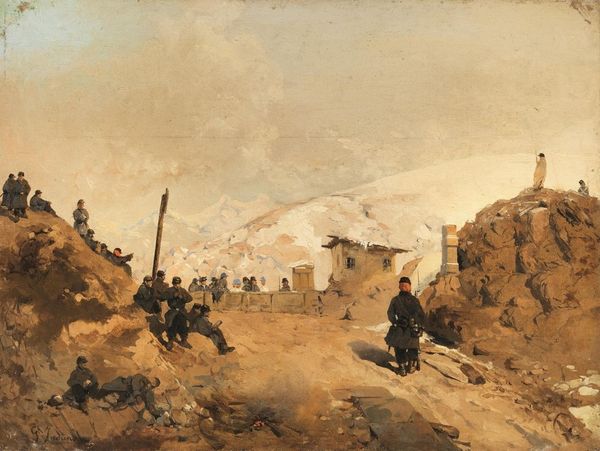
Copyright: Public domain
Gerolamo Induno’s "The Capture of Palestro on 30 May 1859" presents a battlefield scene filled with soldiers, cannons, and the architectural backdrop of Palestro. The flags held high, bristling like ancient totems, dominate the composition. They are potent symbols of national pride and martial endeavor. These flags resonate with similar emblems from antiquity, such as Roman vexilla. Over time, they have evolved to embody the collective will and identity of a people. The psychological impact of such imagery is profound, stirring deep-seated emotions of loyalty and sacrifice. Think of the Winged Victory of Samothrace, a symbol of triumph and victory. Similarly, the flags capture a moment of glory. These are not mere cloths on poles; they are vessels of cultural memory, subconsciously linking past struggles with present aspirations. This battle, and indeed the war that Induno depicts, becomes a cyclical return of a primordial struggle, recast in modern garb. Induno captures not just a historical event, but the timeless human drama of conflict and triumph.
Comments
No comments
Be the first to comment and join the conversation on the ultimate creative platform.



